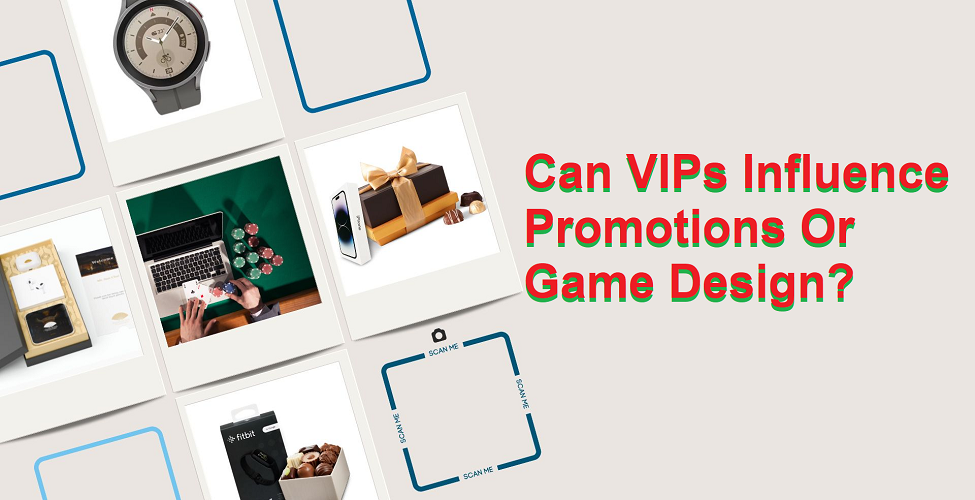Introduction
User tastes and involvement tactics are fundamental in the dynamic arena of online entertainment platforms since they help to guide development. Among the user base, VIP players often defined by high activity, regular involvement, and notable expenditure constitute a particular and powerful group. Often trendsetters in digital networks, these people are brand advocates, high-value contributors, and not only consumers. Especially in areas like promotional offers and game design, their presence and involvement can significantly influence corporate decisions. Emphasizing how their comments, choices, and actions shape the gaming experience for all users, this blog investigates the extent to which VIPs may affect these two important factors.
Knowing The VIP Player Profile
Usually, VIPs are people who show regular and significant platform interaction. This may be seen in the frequency of their logins, the amount they spend, and their involvement in events or beta programs. Because of their major impact on a platform’s income and visibility, these users usually get customized experiences and bespoke offerings. Often, VIPs enjoy early access to new features, unique material, and committed support teams. This particular treatment results from a mutual partnership in which the player adds value to the platform and the platform responds with improved offers. Especially with regard to marketing and game material, VIPs in this ecosystem become obvious choices for affecting strategic choices.
The Loop Of Feedback Between Developers And VIPs
Direct feedback is one of the main ways VIPs shape promotional tactics and game design. Many sites set up specific lines of contact with their most valued users. These can be secret forums, surveys, feedback sessions, and VIP managers. Developers know that these high-tier users frequently have a thorough knowledge of the complexities of the platform, so their insights are particularly important. Unlike casual gamers who may engage with the game intermittently, VIPs tend to enjoy it more holistically. Extended use and a sharp eye for design and balance frequently shape their comments and recommendations.
Not only because of their financial value but also because of their loyalty and long-term dedication, VIPs’ comments sometimes carry more weight. A VIP’s warning of a possible problem with game mechanics, balance, or reward systems triggers quicker and more thorough response than comparable feedback from a new or rare player. Developers and marketing teams know that keeping a VIP is considerably more economical than gaining new users, thus they are more likely to consider VIP feedback important.
Using Behavioral Patterns To Affect Promotions
Often, promotional tactics from seasonal ads to welcome bonuses are based on behavioral analysis. Because VIPs are among the most engaged gamers, their conduct helps to determine what works and what doesn’t. Platforms evaluate VIP involvement levels during promotional activities to gauge efficacy. For example, a certain campaign is deemed a successful model deserving of replication or expansion if VIP involvement rises. On the other hand, limited involvement from this segment could indicate that a promotion is uninteresting, hence guiding changes in next offers.
Furthermore, VIPs could get tailored offers designed especially for them. These deals are both a way of reward and a kind of experimental promotion. Marketers get great information on what kind of offers speak most by seeing how VIPs react to these particular incentives. This can then guide more general user base-targeted larger marketing. Essentially, VIP responses serve as a trial ground for promotional creativity directing the framework, material, and timing of next marketing plans.
Tailoring And Special Access
VIPs frequently get access to unique material not available to the general public. This covers participation in limited-time events, access to private beta environments, and early trials of forthcoming games. These chances let developers collect early input on user interface components, graphic design, and game mechanics. Because cuanhoki VIPs are already aware of the platform’s standards, they are in a good position to offer relative criticism on recent changes.
Often, the insights obtained from these encounters result in changes prior to a feature being made available to the larger population. VIP preferences are essential in determining the final product whether it be a change in reward system, modification in difficulty, or redesign of a user interface. Their impact guarantees that changes fit the expectations of the platform’s most active users, hence improving the probability of a good response across the larger population.
Opportunities For Cooperative Development
Some platforms include VIPs in cooperative development initiatives, hence going farther. These projects could be co-creation campaigns where VIPs can propose plots, characters, or features; design workshops; or exclusive roundtable talks. Although not every idea ends up in the last version, these inputs usually provide great inspiration for programmers.
This cooperative strategy improves the platform’s reputation for being responsive and community-driven as well as promotes a feeling of ownership among VIPs. VIPs grow more involved in the product when they see their ideas mirrored in changes. This virtuous circle benefits both parties: the platform attracts devoted users who act as advocates, and VIPs enjoy a tailored experience formed in part by their own ideas and recommendations.
VIP Influence Constraints
Though they certainly speak loudly, VIPs are hardly all-powerful. To provide a fair and interesting experience, developers have to strike a balance between the demands of all users. Overly catering to VIPs could alienate casual players or newbies who could consider the game excessively complicated, competitive, or inaccessible. Most platforms therefore take a fair approach, guiding their decisions with VIP input instead than following a mandate.
Moreover, not all VIP comments fit technical viability or corporate objectives. Though attractive to a tiny elite group, many ideas might not be feasible for widespread use. Before including VIP-driven modifications, developers have to take into account cost, scalability, and general user influence. This calculated strategy guarantees that although VIPs influence the course of development, the resulting modifications are good for the larger community.

